What if I told you that you could make a listed building more economically viable all whilst maintaining its historic integrity?
In this article I will outline what secondary glazing is, how it differs from other types of window, and why it might be the perfect option for an older home.
- What is secondary glazing?
- What are the differences between secondary and double glazing?
- What are the different secondary glazing types?
- What are the benefits of secondary glazing?
- Secondary glazing for sash windows
- Plastic or glass secondary glazing?
- How much does secondary glazing costs?
- Get quotes from glazing installer
What is secondary glazing?
Secondary glazing is a type of window that is often used in period homes or listed buildings. It provides an alternative option for when people do not want to replace a building’s original window. Secondary windows are suitable for different window, like sash and bay windows.
Essentially, secondary glazing is a frame that sits inside of a pre-existing window which can deliver the added benefits of a more modern window, including high energy efficiency and security.
The added benefits of a more modern window, including high energy efficiency and security.
Installing secondary glazing allows for the building to maintain its external aesthetic value whilst upgrading its performance in a number of different ways.
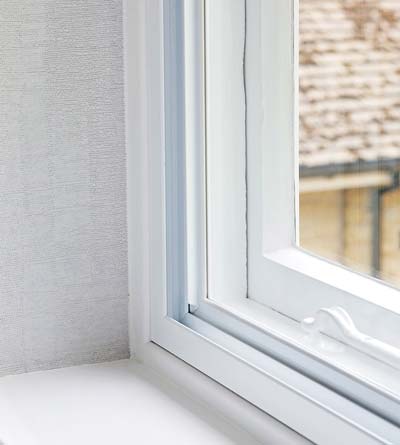
Source photo: secondaryglazing.com
What are the differences between secondary and double glazing?
This is a question that is asked a lot. What is better, secondary glazing or double glazing?
In reality they serve a similar purpose, and both secondary and double glazing will help to improve the insulation of you home both heat wise and acoustically. However, there are some differences which should be outlined.
- Double glazing is more expensive than secondary glazing, and requires and professional window installer to install
Often secondary glazing can be fitted by the property owner. - Double glazing is a better thermal insulator than secondary glazing; however secondary glazing is better at keeping out noise pollution.
- If you are someone who likes to keep their home in pristine condition then it is also worth noting that secondary glazing can be considerably trickier to clean.
Do you want to install double windows or add secondary windows? Request free quotes from window installers today.
What are the different secondary glazing types?
When considering installing anything in your home it is important to be aware of the various types of secondary glazing available.
Below is a list of the different categories of secondary glazing currently on the market, and how they differ from each other.
Fixed secondary glazing
- Useful when window being covered does not need to be accessed.
- Can be fixed permanently or fitted with releases to aid maintenance.
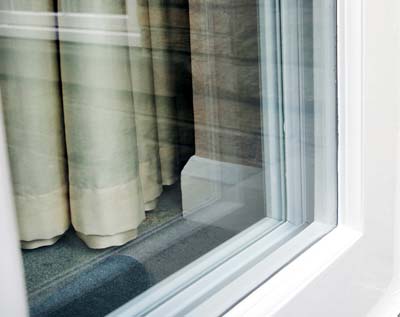
Source photo: gsecg.com
Lift-out secondary glazing units
- Perfect choice for when the window being covered is only in occasional use.
- The secondary glazing can be lifted off of the window every so often to facilitate cleaning or for the opening of the primary window.
- Not recommended for frequent removal.
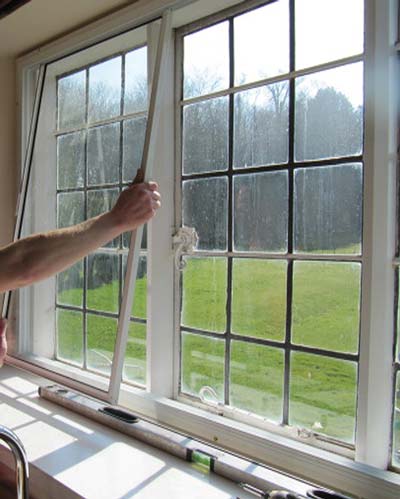
Source photo: soundproofglazing.co.uk
Sliding secondary glazing
- Most commonly used type of secondary glazing
- Can be adapted to fit windows of all sizes
- Easy access to original window for cleaning or ventilation purposes.
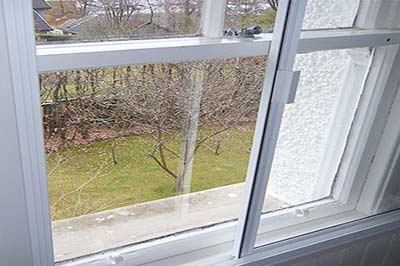
Source photo: nlsg.co.uk/secondary-glazing-gallery.htm
Magnetic secondary glazing
- Held in place by magnets meaning there is less potential for damaging primary window by mistake.
- Cheaper option than permanent secondary glazing
- Very easy to remove for cleaning or access to primary window.
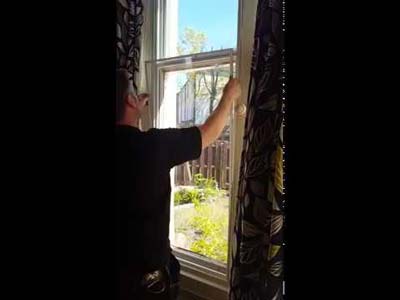
Hinged secondary glazing
- Permanently hinged to an outer frame
- Can be hinged on the left or the right to suit existing window
- Easy to open for maintenance or ventilation access.
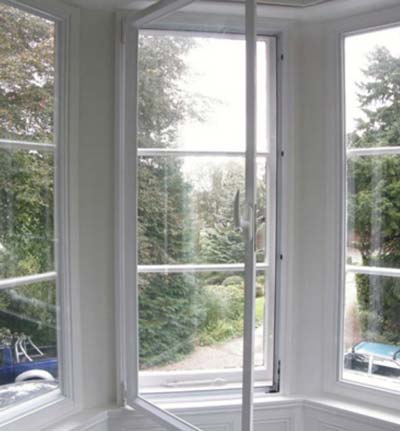
Source photo: nlsg.co.uk
Bespoke secondary glazing
- Can be used where there is a window in a less traditional shape.
- Can be used to cover specialist windows, such as stained glass windows.
- Fitted to compliment the original nature of the host window.
Which type of secondary glazing do you want? Ask a glazing installer which type is suitable for your home. Get free quotes today
What are the benefits of secondary glazing?
The advantages of secondary glazing are:
- Secondary glazing adds additional acoustic insulation and noise cancelling qualities to any property.
- By adding a secondary glazing panel you also make your property more secure, making it more ‘burglar proof’. This means it is harder to break into or burgle your house.
- Secondary glazing works to insulate your property, meaning that you will save money on energy.
- Secondary glazing reduces outside noise.
- One of the main reasons people choose secondary glazing is that it doesn’t alter the aesthetic qualities of listed or period buildings.
- Nor does it need planning permission, which can sometimes be difficult to obtain. In fact, most secondary glazing units can be fitted by the homeowners without the help of an installer.
- There are many different varieties of secondary glazing so the type can be chosen to suit your specific needs.
Opt for secondary glazing in your listed home. Get free glazing quotes.
Secondary glazing for sash windows
Sash windows are often mentioned in relation to secondary glazing. This is normally because people assume that secondary glazing is unsuitable for sash windows, but this is not the case.
A sash window is comprised of one or more moving panels, with one panel sliding over the top of the other in order to open the window. Because of this, secondary glazing for sash windows had been designed to facilitate the sliding function.
Plastic or glass secondary glazing?
This is another common argument when weighing up whether or not to buy secondary glazing. The differences between Perspex and glass are simple, one is cheap and temporary, the other is more expensive but less degradable.
Secondary perspex/ plastic
- Insulates thermally and acoustically
- Cheaper than installing glass
- More likely to break
- Easier to replace
- Discolours over time due to environmental factors.
Secondary glass
- More cost-effective than plastic;
- Easier to clean;
- Longer lasting;
- Will not discolour due to age or environmental factors.
Glass is often seen as a better option for secondary glazing in housing because it is longer lasting, more cost effective and more aesthetically pleasing.
Perspex or plastic is cheaper and will do a similar job, but will discolour with age; it is more commonly used in businesses or office buildings.
How much does secondary glazing costs?
The costs of any solution is important. The same goes for secondary glazing, of course. A secondary window costs £295 on average per window.
The more specific costs in the overview below include installation, VAT and the secondary glazing.
| Secondary glazing | Average costs per sqr meter |
|---|---|
| Fixed | £200 |
| Lift-out units | £320 |
| Sliding | £410 |
| Magnetic | £160 |
| Hinged | £390 |
Get quotes from glazing installer
You may not always need a glazing installer to help you install secondary glazing. However, if you want the extra assurance that the job has been done correctly you can always seek professional guidance.
It is important to do your research. Being informed about what you should expect is critical in any decision making and investment.
It’s a good idea to look for a number of different quotes so you can compare different local glazing installers. Get your secondary glazing quotes today.